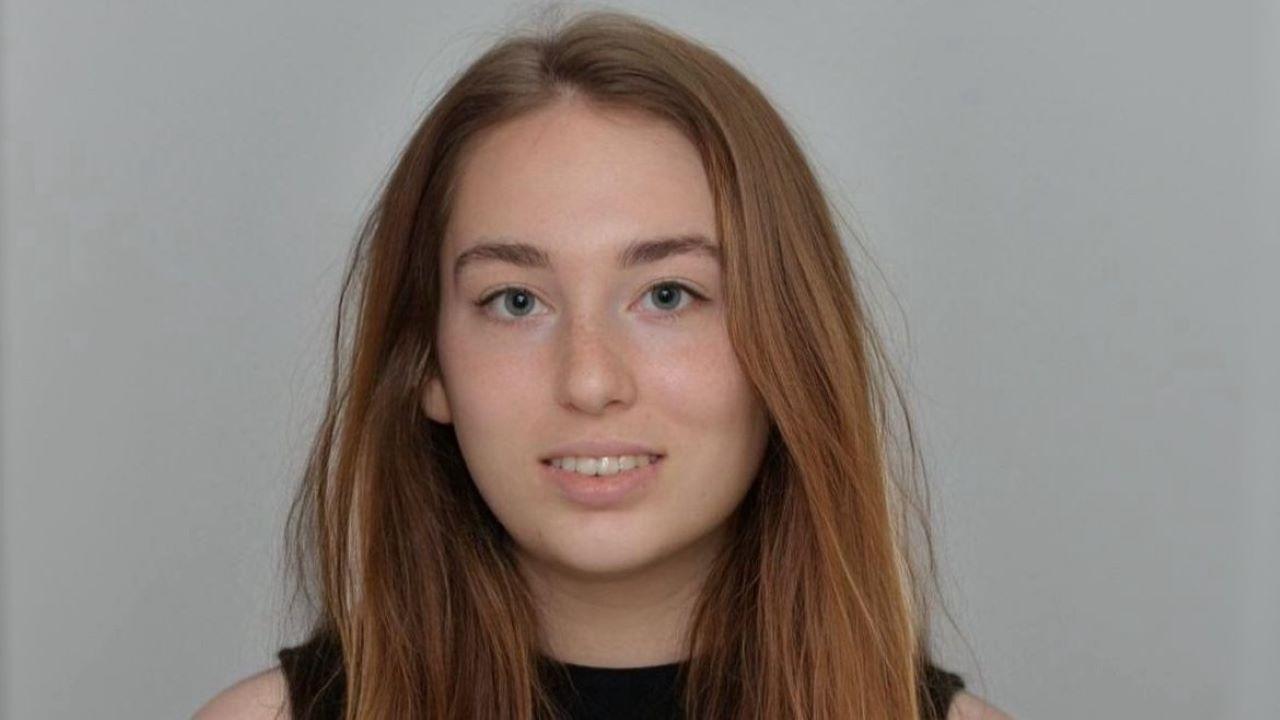Many cybersecurity systems rely on static, rule-based defenses. At Purdue Polytechnic, Milica Slavkovic is developing a new approach that is more fluid and dynamic by incorporating some of the latest innovations in artificial intelligence.
Slavkovic has accomplished a great deal in a very short amount of time; as a sophomore undergraduate, minoring in computer and information technology in Purdue Polytechnic’s School of Applied and Creative Computing (ACC), and majoring in AI in the College of Science, she has taken on a project of impressive size and scope. With the mentorship of Brian Zuel, assistant professor of practice, Slavkovic has designed her CNIT 270 honors project so that she will build an "agentic AI" system designed to learn, adapt and respond to cyber threats in real time.
Agentic AI refers to artificial intelligence systems that are sufficiently competent to perform their own tasks with great latitude, with little to no human intervention. However, to reach this level of self-sufficiency, the foundations and the training of that AI system must be rock-solid. Slavkovic’s goal is to create such a system for the field of cybersecurity.
Slavkovic’s agentic AI project, which has already garnered significant attention at a campus AI conference (“she was the busiest presenter there,” Zuel said) and at Purdue’s Undergraduate Research Expo, aims to close a critical gap in modern cybersecurity.
"The growing mismatch between dynamic threats and static defenses is what originally drew us to start this project," said Slavkovic, who is also a student in the John Martinson Honors College. "Attackers do not simply repeat the same techniques. They adapt, they transform, and they generate new variations faster than traditional security tools can respond to."
Her project moves beyond traditional Intrusion Detection Systems (IDS), which she explains "can detect only attacks that have happened before" by relying on predefined signatures. Instead, Slavkovic is developing an agentic AI system that uses reinforcement learning—a trial-and-error model—to continuously learn and improve.
“We’re trying to create an AI model that can adapt to each single situation," she explained. "For example, catching an attack is a positive reward, and then missing an attack or generating a false alarm is a negative reward."
Over time, the AI agent learns a policy from its experience, allowing it to not only detect threats but also to take action, such as isolating a suspicious host or prioritizing certain types of traffic. The goal is to create a system that doesn't just classify threats but "understands context, reasons about these attacks ... and chooses the right action." This could dramatically reduce the need for human analysts to manually monitor and respond to every alert.
Slavkovic’s intersecting interests in AI, security, and computing are rooted in her personal history. Her passion for the field was sparked during family trips to Bletchley Park in the United Kingdom, the famous home of World War II codebreakers. "Cryptography has been one of the loves of my life since I was a kid," she said. Slavkovic has taken inspiration from many disciplines, and in her time at Purdue has sought out opportunities to make a composite blend of the wide range of different ideas that interest her.
Her academic journey has been just as interdisciplinary. She credits her broad interests to her mother, who holds two Ph.D.s. Before coming to Purdue from Serbia, she took two years of neuroscience studies during high school. Those two years helped shape her understanding of how both human and artificial neural networks function.
"I always wanted to connect computer science with neuroscience, and also with security," she said. "AI was the intersection."
That unique, hands-on and interdisciplinary approach is what drew her to Purdue. After exploring several top-tier universities, she found that Purdue's educational philosophy stood out.
"What I saw in other universities is that they teach in a way that isn’t as hands-on. They put the emphasis on theory and theoretical concepts," Slavkovic said. "What distinguishes Purdue ... is how they approach the problems. There’s a focus on cultivating the logical thinking you need to adapt to specific situations."
For Slavkovic, her innate curiosity and desire to break new ground on problems meant that she wanted a different kind of environment—one that would allow her intellectual strengths to blossom.
"When it comes to solving problems, I have this metaphor of being in a city,” Slavkovic said. “If you’re in Chicago at the street level, it’s impossible to see the big picture of what’s going on around you. So let's go on top of one of the buildings, and then we’ll see a completely different perspective on what was in front of you a minute ago. After a day or two, I might have a completely different approach and I will have the problem solved in my head. I just didn’t see it from the very beginning because I was stuck in one perspective."
Slavkovic serves as a mentor for the John Martinson Honors College and machine learning at Purdue, and as a teaching assistant for the Data Mine and a computer science course. She sees these roles as an opportunity to inspire a similar mindset in her peers.
"My task was to create leaders from my mentees," she said. "You cannot be a leader if you're constantly stuck in your own secure bubble. You have to step out of it if you really want to make an impact."
Looking ahead, Slavkovic plans to pursue a Ph.D. in AI and cybersecurity, with a potential focus on quantum computing, and aspires to a career that will give her opportunities to shape how technology is taught.
For now, she remains focused on the complexities of her research, and hopes to do a fair amount of reshaping of the technology landscape in the meantime. For aspiring students, Slavkovic is eager to see them cultivate an innate sense of adventurousness: "Stay curious. Take any opportunity that you have, wander around, ask questions and never run from unfamiliarity."
Additional information

